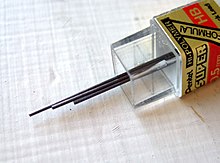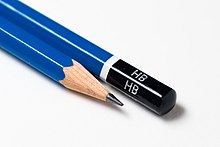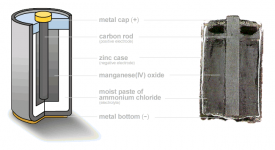Re: @sreten
Hi,
If it needs to be conductive it needs to be a "metallic" solid.
Conduction in "natural" fluids also involves reaction
at the electrodes as it involves free ions and bases.
"Metallic" conduction involves a free electron cloud (or holes).
Why does it need to be highly conductive ?
What is conductive enough ?
🙂/sreten.
gentlevoice said:
I'm looking to make a membrane approximately 1 um thick with a conductive layer outside or inside the membrane material. There will be a strong and quite tight net to keep the membrane structured, however, I need to find a material that can fill out the "blanks"/ i.e. the holes in the net. Something that is highly conductive.
Preferably something readily available in the nature, like fluid from plants or ?? from insects, or the like.
Any suggestions?
Best,
Jesper
Hi,
If it needs to be conductive it needs to be a "metallic" solid.
Conduction in "natural" fluids also involves reaction
at the electrodes as it involves free ions and bases.
"Metallic" conduction involves a free electron cloud (or holes).
Why does it need to be highly conductive ?
What is conductive enough ?
🙂/sreten.
I have read
that Lemons can be use for battery.
If using them with 2 different metals.
But have no idea how to setup such a natural battery cell.
that Lemons can be use for battery.
If using them with 2 different metals.
But have no idea how to setup such a natural battery cell.
make lemonade...
it's really quite simple... an ordinary iron/steel nail and a piece of copper wire will yield ~.9volts when connected thru an external wire. The lemon only serves as an electrolyte to provide ionic conduction. The amount of current depends on the surface area of the elctrodes, wire resistance, etc.
Or, select any 2 conductors from this:
http://www.diracdelta.co.uk/science/source/e/l/electromotive series/source.html
John L.
lineup said:I have read
that Lemons can be use for battery.
If using them with 2 different metals.
But have no idea how to setup such a natural battery cell.
it's really quite simple... an ordinary iron/steel nail and a piece of copper wire will yield ~.9volts when connected thru an external wire. The lemon only serves as an electrolyte to provide ionic conduction. The amount of current depends on the surface area of the elctrodes, wire resistance, etc.
Or, select any 2 conductors from this:
http://www.diracdelta.co.uk/science/source/e/l/electromotive series/source.html
John L.
Copper and Ferrite(iron) = 0.9 Volt
I was thinking copper - zink. What will this give? In voltage?
I also understand THE SIZE of the metal electrodes
will give more or less current flow (electron flow in the electrolytic liquid)
What other metals we often have in household can give a good higher voltage?
I was thinking copper - zink. What will this give? In voltage?
I also understand THE SIZE of the metal electrodes
will give more or less current flow (electron flow in the electrolytic liquid)
What other metals we often have in household can give a good higher voltage?
http://en.wikipedia.org/wiki/Zinc-carbon_batteryNormal (not rechargable, non-alkaline) 1.5 V batteries are
ZINK-rod (negative pole) and
CARBON-rod with ManganDioxide(tungsten) on.
In between is
Electrolyte liquid of salmiak + zinkcloride.
A Zinc-carbon dry cell or battery is packaged in a zinc can that serves as both a container and anode.
It was developed from the wet Leclanché cell (pronounced /lɛklɑːnˈʃeɪ/). "Super" or "Heavy Duty" batteries, technically called zinc chloride cells, are an improved version from the cheaper "General Purpose" variety. The cathode is a mixture of manganese dioxide and carbon powder. The electrolyte is a paste of zinc chloride and ammonium chloride dissolved in water. Carbon-zinc batteries are the least expensive primary batteries and thus a popular choice by manufacturers when devices are sold with batteries included. They can be used in remote controls, flashlights, toys, or transistor radios, where the power drain is not too heavy.
Attachments
Hi everyone
@sreten: In the first round I will be using the conductive material for membranes in a magnestatic headphone. For an approximately 60 cm long strip of 1 um thick material I would prefer the resistance to be around 10 ohms. And very lightweight. Any suggestions?
Sounds very interesting with the batteries as well. Was thinking that maybe it was relevant to start a new thread on this subject? I would be very interested to learn more about how batteries work and how they can be made for audio purposes ....
Regards,
Jesper
@sreten: In the first round I will be using the conductive material for membranes in a magnestatic headphone. For an approximately 60 cm long strip of 1 um thick material I would prefer the resistance to be around 10 ohms. And very lightweight. Any suggestions?
Sounds very interesting with the batteries as well. Was thinking that maybe it was relevant to start a new thread on this subject? I would be very interested to learn more about how batteries work and how they can be made for audio purposes ....
Regards,
Jesper
gentlevoice said:Hi everyone
@sreten: In the first round I will be using the conductive material for membranes in a magnestatic headphone. For an approximately 60 cm long strip of 1 um thick material I would prefer the resistance to be around 10 ohms. And very lightweight. Any suggestions?
Sounds very interesting with the batteries as well. Was thinking that maybe it was relevant to start a new thread on this subject? I would be very interested to learn more about how batteries work and how they can be made for audio purposes ....
Regards,
Jesper
Aluminium is the material of choice here. It has the best conductivity per unit mass. Silver is best per unit volume, but is much denser, and in this application it is mass that is important.
Aluminium is also readily available as a foil.
yeah, gentlevoice
your topic was about some thing else natural
I may start one special topic about
you want some thing with like 1/10 of the resistance of copper
if look into nature we have some liquid substances (wet)
that conduct some electricity
problem is of course DRY OUT factor
I am afraid is not many things better than carbon = DRY substance
for eample an ordinary pencil will conduct with some resistance


http://en.wikipedia.org/wiki/Pencil
your topic was about some thing else natural
I may start one special topic about
Make your own Battery Cells
to produce DC Electrical current & power supply
Using nothing but what you have in your kitchen
and can find in your local food store
you want some thing with like 1/10 of the resistance of copper
if look into nature we have some liquid substances (wet)
that conduct some electricity
problem is of course DRY OUT factor
I am afraid is not many things better than carbon = DRY substance
for eample an ordinary pencil will conduct with some resistance
Graphite pencils
These are the most common types of pencils. They are made of a mixture of clay and graphite and their darkness varies from light grey to black. Their composition allows for the smoothest strokes.
Charcoal pencils
They are made of charcoal and provide fuller blacks than graphite pencils, but tend to smudge easily and are more abrasive than graphite. Sepia-toned and white pencils are also available for duotone techniques.
Carbon pencils
They generally are made of a mixture of clay and lamp black, but are sometimes blended with charcoal or graphite depending on the darkness and manufacturer. They produce a fuller black than graphite pencils, but are smoother than charcoal.


http://en.wikipedia.org/wiki/Pencil
If you insist on metallic film, then gold leaf is probably the thinnest foil available, but it is fragile. I don't know about 1 micrometre, but thin enough so it passes light.
As for the batteries, I think the most interesting 'natural fluid' cells are seawater cells, this is at least abundant and cheap, and there's a genuine application.
w
I looked it up. 0.1~0.125 um. Thin.
As for the batteries, I think the most interesting 'natural fluid' cells are seawater cells, this is at least abundant and cheap, and there's a genuine application.
w
I looked it up. 0.1~0.125 um. Thin.
Hi,
There is no advantage to using a lower conductivity material to get
a ballpark impedance, it is the same as adding an external resistor.
For a magnetic diaphragm either use a step down transformer or
arrange your conductor pattern to give an appropriate impedance,
this would require high precision for the tiny gaps.
Aluminium on a mylar / polyester backing is the classic choice.
If power handling is an issue then a high temperature backing.
🙂/sreten.
There is no advantage to using a lower conductivity material to get
a ballpark impedance, it is the same as adding an external resistor.
For a magnetic diaphragm either use a step down transformer or
arrange your conductor pattern to give an appropriate impedance,
this would require high precision for the tiny gaps.
Aluminium on a mylar / polyester backing is the classic choice.
If power handling is an issue then a high temperature backing.
🙂/sreten.
I like Jesper's original idea. Use a mesh and fill it with a conductive material esily found in nature.
Might not be the best or most practical idea, but at last it's interesting and fun to try!
Might not be the best or most practical idea, but at last it's interesting and fun to try!
Thanks all for commenting and suggesting 😉
I have looked into gold leaf foil (found it in 0,2 to 0,4 mymeter thickness), and in my assessment it is indeed fragile. I have also contacted with a chinese manufacturer of silver foil and they have silver foil available in the same thickness. Only I would have to buy large quanta
I have also looked into graphite from pencils and it is interesting, however, if possible I'd still like to find a "material" from nature. I do realise, though, that it probably will have to have a very high content of metal or something similar as ionic conduction may not be possible in a dry medium (??? as lineup noted above).
I have tried out a very thin mesh of natural protein fibers where the holes between the fibers are closed by a thin layer of the substance coming from linseed when they are soaked in water (a starch?). It works and it also "glues" a sheet of household aluminum (for try-out) to the mesh. I have a good feel it will work with with gold foil, silver foil, other foils, or mixed with graphite as well. One challenge, though, is how to make the "linseed starch" layer thin enough when graphite is used ....
I any of you knows a good deal about practical battery design - very low impedance, high capacity, longevity, conductive media, rods, how to calculate the voltages, geometries for superb conduction etc. - or maybe have a link to a straightforward webpage on this I'd appreciate hearing about it. Again my preference would be for a solution based on natural, and readily available materials.
Thanks again for your comments and suggestions,
Jesper
I have looked into gold leaf foil (found it in 0,2 to 0,4 mymeter thickness), and in my assessment it is indeed fragile. I have also contacted with a chinese manufacturer of silver foil and they have silver foil available in the same thickness. Only I would have to buy large quanta

I have also looked into graphite from pencils and it is interesting, however, if possible I'd still like to find a "material" from nature. I do realise, though, that it probably will have to have a very high content of metal or something similar as ionic conduction may not be possible in a dry medium (??? as lineup noted above).
I have tried out a very thin mesh of natural protein fibers where the holes between the fibers are closed by a thin layer of the substance coming from linseed when they are soaked in water (a starch?). It works and it also "glues" a sheet of household aluminum (for try-out) to the mesh. I have a good feel it will work with with gold foil, silver foil, other foils, or mixed with graphite as well. One challenge, though, is how to make the "linseed starch" layer thin enough when graphite is used ....
I any of you knows a good deal about practical battery design - very low impedance, high capacity, longevity, conductive media, rods, how to calculate the voltages, geometries for superb conduction etc. - or maybe have a link to a straightforward webpage on this I'd appreciate hearing about it. Again my preference would be for a solution based on natural, and readily available materials.
Thanks again for your comments and suggestions,
Jesper
gentlevoice said:Hi everyone
@sreten: In the first round I will be using the conductive material for membranes in a magnestatic headphone. For an approximately 60 cm long strip of 1 um thick material I would prefer the resistance to be around 10 ohms. And very lightweight. Any suggestions?
Jesper
Hi,
Weight versus conductivity = aluminium nearly always.
Unless you add a conductor pattern you will need a transformer.
🙂/sreten.
- Status
- Not open for further replies.
- Home
- General Interest
- Everything Else
- Naturally conductive material?
